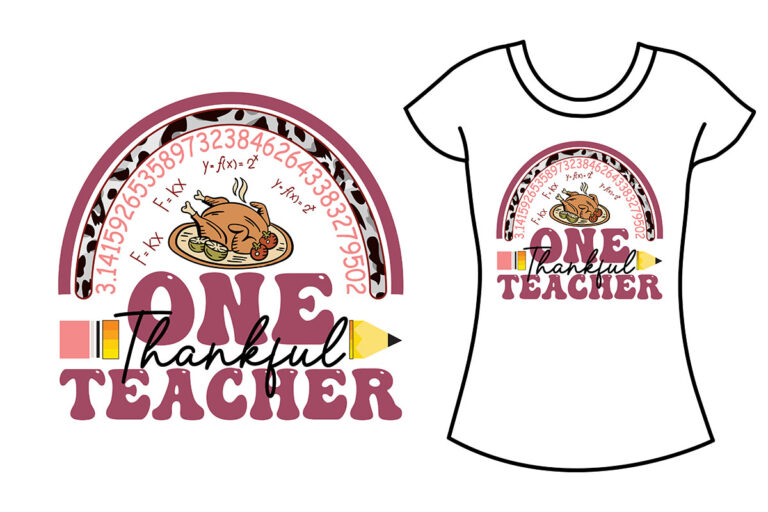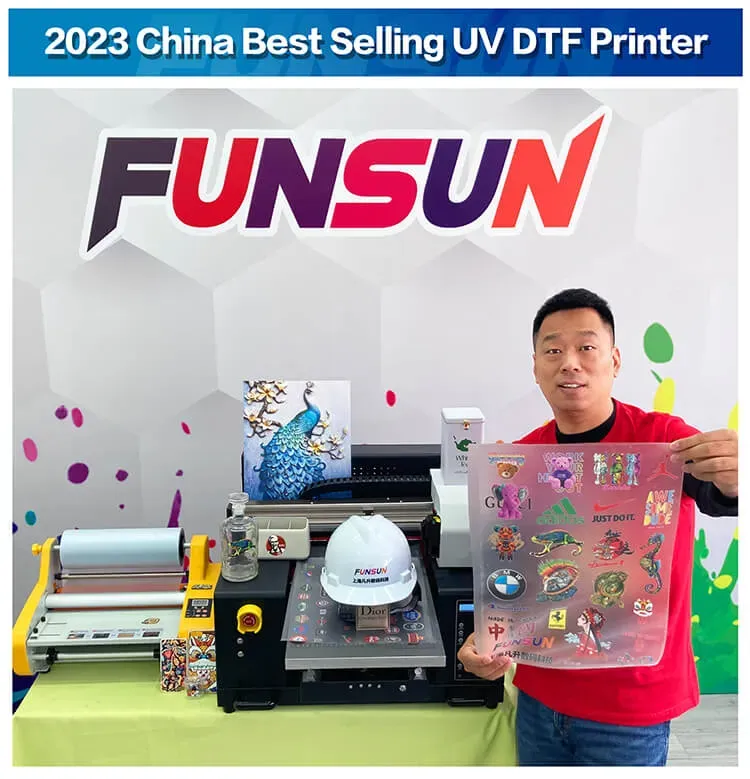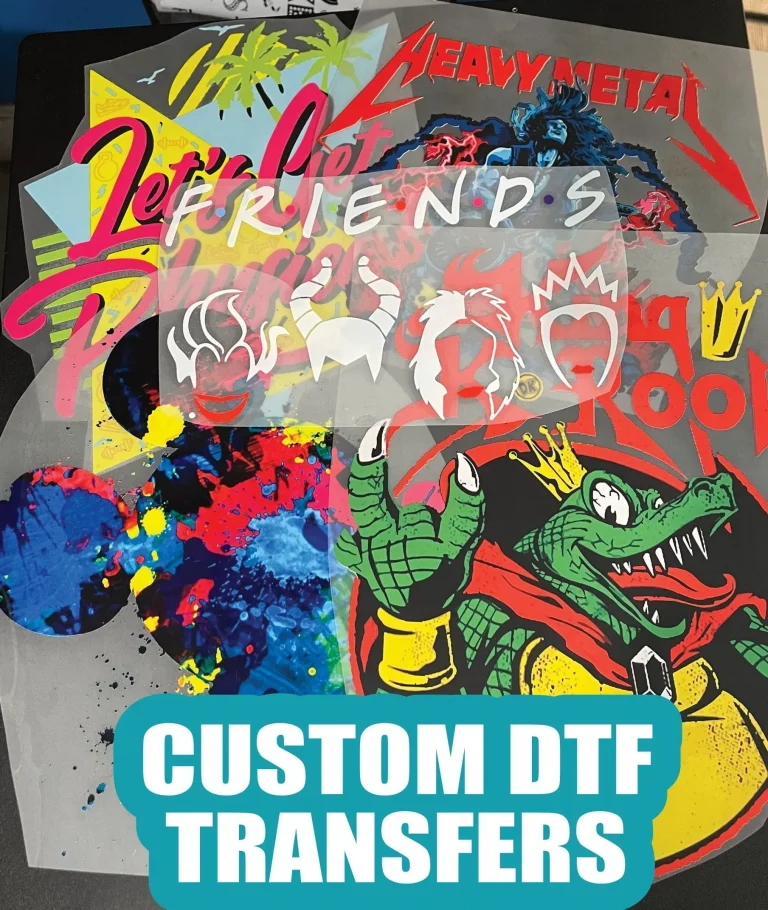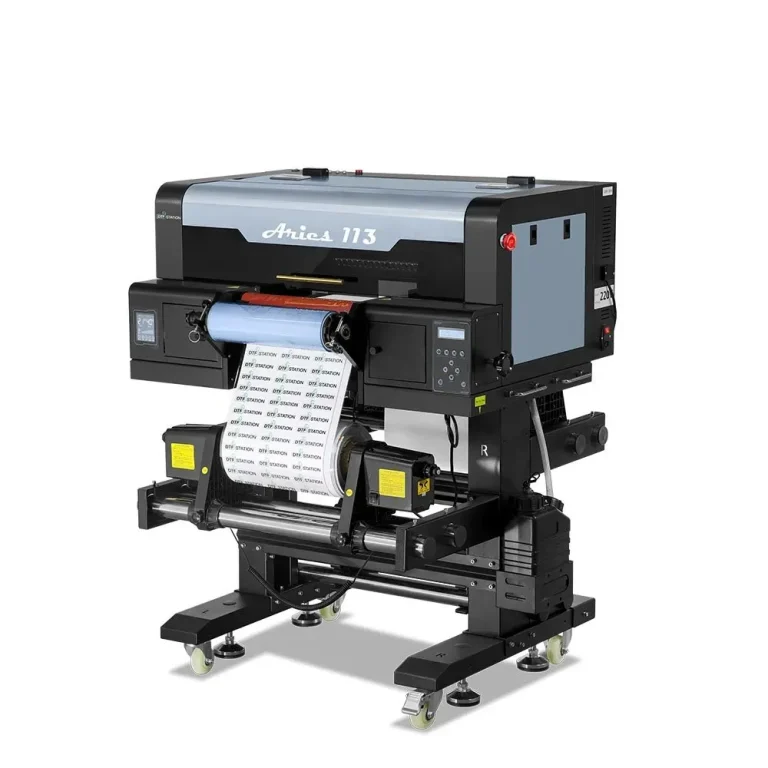UV DTF Printing: The Ultimate Solution for Designers
In the rapidly evolving world of printing technology, **UV DTF printing** stands out as an innovative and transformative solution for designers. This cutting-edge approach combines the advantages of UV Direct to Film printing with advanced curing techniques, allowing for the creation of stunning, high-quality visuals on a wide variety of substrates. As businesses increasingly seek sustainable printing solutions, the benefits of UV DTF are becoming more evident, from its reduced environmental impact to its cost-effective production methods. Moreover, recent advancements in UV DTF technology have significantly increased the potential for vibrant, durable prints that resonate with today’s market demands. Join us as we explore the dynamic features and future possibilities of UV DTF printing.
Also known as UV Direct to Film, DTF printing is capturing the attention of designers and marketers alike thanks to its remarkable efficiency and versatility. By leveraging ultraviolet light curing techniques, this innovative printing method ensures that images are not only vivid but also endure the rigors of various environments. As businesses strive to adopt more eco-friendly practices, the integration of sustainable printing solutions within the UV DTF framework presents a compelling option for meeting environmental goals without compromising quality. Furthermore, these advancements in DTF printing technology are paving the way for a new era of creativity in design and production, making it easier than ever to bring concepts to life on a myriad of materials.
Understanding UV DTF Printing: A Game Changer for Designers
UV DTF printing stands at the forefront of modern printing technologies, combining the efficiency of direct-to-film methods with the superior quality of ultraviolet curing. This innovative process allows designers to create vibrant prints that adhere to a multitude of materials, ranging from rigid surfaces like glass and wood to flexible options like textiles and vinyl. The ability to work with such varied substrates opens up endless creative possibilities, enabling designers to push the boundaries of their projects further than ever before.
The essence of UV DTF technology is its rapid curing process, which solidifies prints almost instantly upon exposure to UV light. This not only speeds up production times but also enhances the durability and finish of the prints. As a result, designers can produce high-quality graphics in significantly less time while ensuring that the prints maintain their integrity throughout the manufacturing process.
Key Advantages of Utilizing UV DTF Printing Technology
One of the prime benefits of UV DTF printing is its remarkable versatility. Unlike traditional printing methods that may be limited to specific materials, UV DTF can be used on a diverse range of surfaces, allowing designers to experiment with various applications. This flexibility makes it ideal for personalized products, promotional items, and even large-scale signage, catering to a wide spectrum of market needs.
Durability is another standout feature of UV DTF printing. The fast curing process not only ensures quick production cycles but also fortifies the bond between the ink and the material. This leads to prints that are resilient against scratches, fading, and environmental wear, setting a new standard in quality for designers seeking longevity in their work. Clients can trust that the products created using UV DTF technology will withstand the test of time, reinforcing brand loyalty.
The Cost Efficiency of UV DTF Printing
UV DTF printing stands out as a cost-effective solution in comparison to traditional printing methods. For designers and manufacturers, the efficiency of the UV curing technology significantly reduces waste, as less ink is used in the process and the need for extensive setup time is eliminated. This makes UV DTF particularly advantageous for small batch production where minimizing costs without compromising quality is essential.
Additionally, the reduced need for multiple print runs and the longevity of UV DTF prints further contribute to its cost-effectiveness. As designers become more aware of their budget while still requiring high-quality results, UV DTF printing presents a viable option that promotes both savings and exceptional output. This financial upside positions UV DTF printing as a catalyst for growth among creative professionals.
Eco-Friendly Innovations in UV DTF Printing
In today’s environmentally-conscious marketplace, UV DTF printing emerges as a sustainable option that many designers are incorporating into their practices. The technology employs eco-friendly inks that adhere to stringent environmental regulations, reducing the harmful waste often associated with traditional printing processes. This commitment to sustainability resonates with consumers and brands that prioritize eco-responsibility in their supply chains.
Moreover, the efficient use of resources in UV DTF printing means less energy consumption during production, further contributing to its eco-friendly profile. With increasing pressure on businesses to adopt sustainable practices, UV DTF not only meets this demand but also aligns with the global movement towards responsible printing solutions, making it an attractive choice for forward-thinking designers.
Technological Advancement in UV DTF Printing
Recent advancements in UV DTF printing technology have significantly elevated its quality and performance standards. Manufacturers are now developing innovative UV inks that boast improved adhesion, color vibrancy, and durability, offering designers results that meet their exacting standards. These technological developments are crucial in helping designers meet the evolving demands of the market and deliver prints that stand out for their quality.
As the UV DTF landscape continually evolves, staying abreast of these technological advancements becomes essential for designers looking to remain competitive. By embracing the latest tools and techniques, designers can not only enhance their creative offerings but also explore new markets and applications—ensuring their work is not only relevant but leading the charge in printing innovation.
The Future of UV DTF Printing: Trends and Opportunities
As we look ahead, the future of UV DTF printing holds promising opportunities for designers across various industries. With ongoing research and development, we can expect to see enhancements in speed, quality, and even more innovative applications. This positions UV DTF printing as a transformative force in design, driving creativity while responding to market demands for efficiency and sustainability.
Furthermore, as more businesses adopt UV DTF technology, the community surrounding this printing method is likely to flourish. Networking opportunities, collaborative projects, and shared innovations can emerge, providing a rich environment for designers to learn from each other and push the boundaries of what is possible in the printing world. The potential for growth and collaboration within the UV DTF space is considerable, affirming its place as a leader in modern printing technology.
Frequently Asked Questions
What are the main benefits of UV DTF printing for designers?
UV DTF printing offers several key benefits for designers, including versatility in materials, durability, cost-effectiveness, and eco-friendly options. This technology allows for vibrant prints on various substrates, ensures resistance to fading and scratching, reduces waste during production, and uses eco-friendly inks that adhere to sustainable printing solutions.
How does UV Direct to Film printing differ from traditional DTF printing technology?
UV Direct to Film (DTF) printing differs from traditional DTF printing technology mainly due to its use of UV light curing. This enables almost instantaneous curing of prints, leading to faster turnaround times without compromising print quality, as well as the ability to print on a wider range of materials.
What advancements have been made in UV DTF printing technology recently?
Recent advancements in UV DTF printing technology include improvements in UV ink formulations that enhance adhesion, color accuracy, and durability of prints. Additionally, industry adoption has surged, with major manufacturers releasing new printers optimized for UV DTF, making this technology more accessible and efficient.
Is UV DTF printing a sustainable printing solution?
Yes, UV DTF printing is considered a sustainable printing solution as it often utilizes eco-friendly inks that comply with environmental regulations. This printing method also minimizes resource use and energy consumption, aligning with the industry’s shift toward greener practices in manufacturing.
What challenges do designers face when adopting UV DTF printing?
Designers may face challenges such as high equipment costs and the need for technical knowledge when adopting UV DTF printing. The initial investment in UV DTF printers can be significant, and operating the technology effectively demands a level of expertise that may require training and practice.
Can UV DTF printing be used on both rigid and flexible materials?
Absolutely! UV DTF printing is versatile enough to be used on both rigid and flexible materials. This capability allows designers to explore a vast array of applications, from printed signage and promotional items to custom garments and fabric designs.
| Key Points | Details |
|---|---|
| What is UV DTF Printing? | UV DTF printing merges direct-to-film methods with UV light curing for high-quality, vibrant prints on various surfaces. |
| Key Benefits | 1. **Versatility in Materials:** Prints on hard and flexible substrates. 2. **Durability:** Scratch-resistant and waterproof; maintains color over time. 3. **Cost-Effectiveness:** Reduces waste, beneficial for small jobs. 4. **Eco-Friendly Options:** Uses sustainable inks adhering to regulations. |
| Recent Developments | Increased industry adoption, advancements in ink formulations, and a focus on sustainability by manufacturers. |
| Challenges | 1. **Equipment Costs:** High initial investment barrier. 2. **Technical Knowledge:** Requires understanding and experience with the technology. |
Summary
UV DTF printing represents a transformative approach within the printing industry, providing exceptional benefits for designers eager to elevate their projects. By integrating traditional DTF techniques with innovative UV curing methods, this technology ensures vibrant prints that are versatile, durable, and cost-effective. Designers have the creative freedom to print on varied surfaces, making it a preferred choice for custom projects. The sustainability aspect, coupled with technological advancements, positions UV DTF printing as a forward-looking solution that balances quality with environmental responsibility. As the industry continues to evolve, adopting UV DTF printing could be a strategic move for designers aiming to distinguish themselves in a competitive market.







